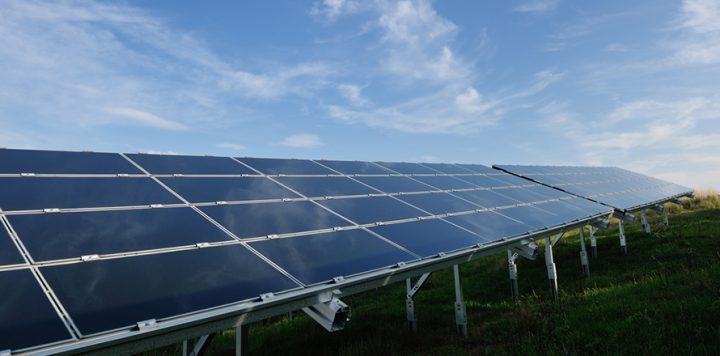Since the industrial revolution, the world has predominantly relied on traditional energy sources such as fossil fuels, petroleum, and natural gas to power its growing needs. However, the accelerating consumption of these finite resources, coupled with their slow natural formation processes spanning millions of years, has created an urgent need to transition towards non-traditional renewable alternatives. These alternative sources must not only meet the increasing global energy demands but also prove to be more economically viable and environmentally sustainable in the long run. Fortunately, solar energy has emerged as a promising solution, demonstrating remarkable effectiveness in providing energy in a direct, secure, and sustainable manner. As a result, it has become the centerpiece of worldwide efforts focused on developing clean and renewable energy sources for the future.
There exists a diverse array of solar energy solutions that harness both sunlight and heat to generate thermal energy, hot water, and electricity. These versatile technologies find applications across various sectors, including domestic households, industrial facilities, and agricultural operations. Among the most significant technological advances in this field are photovoltaic systems, which have revolutionized how we capture and utilize solar energy.
The conversion of the sun’s rays into electrical energy occurs through sophisticated devices called solar cells, which are essentially “photovoltaic” converters. These innovative components transform direct sunlight into usable electricity through a complex photovoltaic effect. Solar cells are carefully engineered with semi-conductive photosensitive materials, encased between specialized front and back covers that efficiently conduct electricity while protecting the internal components.
The fundamental building blocks of solar technology, solar cells, are precisely engineered thin chips made primarily of silicon, intentionally modified with carefully controlled amounts of impurities. This strategic modification creates a unique electrical structure where one side develops a positive charge while the other maintains a negative charge. Typically, an individual solar cell generates approximately one watt of power output, though this can vary based on factors such as sunlight intensity and cell efficiency.
Solar cell panels have become increasingly popular in residential applications, where they efficiently convert solar energy into electrical power to support various daily household needs. These applications range from powering water heaters and air conditioning systems to operating essential cooking appliances and maintaining optimal heating and cooling conditions throughout the home. Modern integrated systems leveraging solar energy are now being constructed to generate electricity on a larger scale, offering two distinct configuration options:
- Individual system, or off-grid system.
- Dual system, or on-grid system.
The comprehensive architecture of solar energy systems incorporates several essential components, including high-efficiency panels, sophisticated inverters or energy storage batteries, reliable connectors, and precise charge regulators. The decision between implementing an off-grid or on-grid system isn’t arbitrary but requires careful consideration of various factors and specific criteria. For instance, in remote locations situated far from established government electricity networks, the off-grid system becomes an essential solution for generating reliable electric power to meet local needs.
Off-grid system
The off-grid solar power system, alternatively known as an independent solar power plant, operates autonomously without any connection to the public electricity grid infrastructure. This self-sufficient system necessarily incorporates battery storage solutions to capture and preserve excess electrical energy generated during daylight hours for use during nighttime or periods of limited sunlight. This configuration proves particularly ideal for generating AC/DC electric power across diverse settings, including residential areas, construction sites, high-rise buildings, mining operations, temporary installations, and other locations situated beyond the reach of conventional public electricity infrastructure. Notably, this versatile system can also be implemented in properties with existing landline connections, where through the integration of a simple electrical circuit, it can function as an automatic backup power solution during grid outages. During normal operations, such hybrid setups allow the property to draw its primary power from the public electricity network while maintaining the capability to switch seamlessly to solar power when needed.
These off-grid solar systems are distinguished by their comprehensive suite of advanced features, including sophisticated self-control mechanisms, robust automatic protection protocols, state-of-the-art remote monitoring capabilities, and an efficiently integrated structural design. The systems are engineered to deliver consistently stable and reliable performance while maintaining the highest standards of environmental sustainability. Their user-friendly interface and straightforward operational requirements make them particularly accessible to a wide range of users, from homeowners to outdoor enthusiasts. Whether providing essential lighting solutions for residential spaces and office environments or delivering reliable power for charging smartphones, tablets, laptops, and various other digital devices during camping expeditions or outdoor activities, these systems offer remarkable versatility and dependability.
On-grid system
The on-grid solar power system represents a sophisticated integration with existing electrical infrastructure, establishing a direct connection to the government electricity grid for power generation and distribution. This interconnected approach significantly enhances the flexibility of solar energy utilization while simultaneously extending the operational lifespan of solar electricity generation capabilities. The system’s design allows for precise electricity distribution based on the dynamic requirements of both end users and power grid operators, creating an efficient and responsive power management solution. A particularly valuable feature of this configuration is its ability to provide critical emergency electrical power during public grid failures or outages, making it an especially attractive option for residential areas where consistent power supply is essential.
The cornerstone of this system’s innovative design is its implementation of bidirectional electricity metering technology. This advanced metering system facilitates two-way power flow, enabling electricity to either flow into the residence for consumption or out from the property back into the public electricity network. This bilateral arrangement creates an opportunity for consumers to monetize their excess solar-generated electricity by selling it back to the Electricity Authority, effectively transforming private residences into small-scale power generation facilities.
It’s important to note that the implementation of this bidirectional metering system requires supportive national energy policies and regulatory frameworks. While this requirement has historically limited its adoption, there is an encouraging trend among Arab nations, which are increasingly embracing this progressive approach to energy management. The system offers significant advantages, particularly in its streamlined design that eliminates the need for battery storage systems or charging regulators, while simultaneously optimizing energy utilization and minimizing waste.
Solar pumping systems
Solar pumping systems represent an innovative and environmentally conscious alternative to conventional diesel-powered pump installations. These systems are particularly well-suited for agricultural operations in remote locations that lack access to traditional power grid infrastructure. Their primary applications include direct water pumping for agricultural purposes and water storage in reservoirs for subsequent use in irrigation or drinking water supply, with operations naturally aligned with daylight hours.
The solar water pumping system architecture comprises three essential components: a specialized solar pump inverter, a high-efficiency submersible pump, and a carefully designed solar cell array. This system’s fully automated operation eliminates the need for constant human supervision, while its innovative use of water tank storage instead of conventional battery systems for energy storage significantly reduces both initial installation costs and ongoing maintenance expenses, all while maintaining stable and reliable operation.
The implementation of solar pumps offers a comprehensive solution to various water-related challenges in underserved communities, agricultural regions, livestock farming operations, and other remote locations. These systems effectively address critical needs related to drinking water access, irrigation requirements, and various other water management challenges, providing a sustainable and efficient solution for communities beyond the reach of conventional infrastructure.
Conclusion
In conclusion, as the global reliance on traditional energy sources becomes increasingly unsustainable, the transition to renewable energy solutions has become imperative. Solar energy stands out as a highly viable and sustainable option, playing a central role in the global shift towards clean energy. Technological advancements, particularly in photovoltaic systems, have enabled the efficient conversion of sunlight into electricity, making solar energy accessible and practical for a wide range of applications. Solar cells, primarily composed of silicon, are engineered to maximize energy output, with solar panels now a common feature in residential settings. These systems come in two main configurations: off-grid and on-grid, each offering unique benefits. Off-grid systems provide essential power solutions for remote areas and serve as reliable backup options, while on-grid systems enhance integration with existing electrical infrastructures. Both systems underscore the versatility and dependability of solar power, supporting diverse energy needs while promoting environmental sustainability. As solar technology continues to evolve, it promises to meet the growing global energy demands in a more economically viable and environmentally friendly manner.


